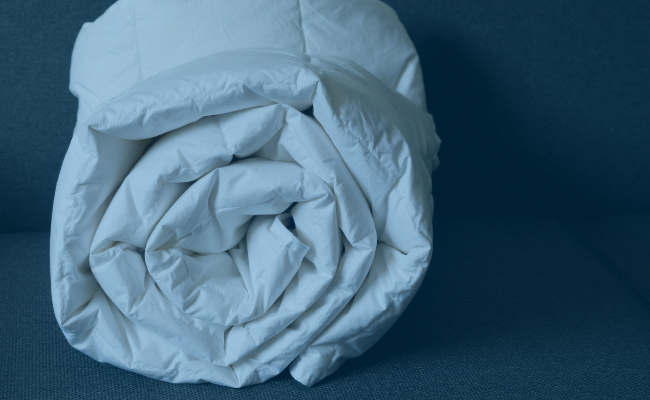Studies show that Americans spend around 11 hours a day in bed. Whether you’re enjoying a night’s sleep, or just laying around watching television, we ultimately spend nearly half of our lifetimes in our beds! As we dedicate all of this time to lounging around our favorite pillows, sheets, and comforters, it’s important that we keep them comfortable, clean, and free of bacteria.
Most people acknowledge the need to regularly change their sheets to provide a fresh, clean slumber environment. Smaller blankets and pillowcases are also relatively simple to wash because they are often just as light as a standard load of laundry. What many people don’t know, however, is how to wash a comforter without it getting lumpy or damaging the softness provided by the fabrics.
Why We Need to Clean Our Comforters
Your thick, bulky comforters need to be washed and dried in specific ways to avoid lumping or material tears, but more importantly to ensure that the entire surface is thoroughly cleaned. While you sleep, your body sheds millions of skin cells throughout your bedding that attract dust-mites. Comforters also collect and store bacteria and allergens that are potentially harmful to you, and can leave you experiencing cold symptoms.
How Often Should We Clean Our Comforters
There is no exact timeline on how often your comforter needs a proper cleaning. They do not need to be washed as often as your sheets do, but they also should not be neglected. Try to get in the habit of regularly washing your comforters on a schedule that works for you, as too much time between cleaning accumulates dust or dirt that can be harmful, and washing too often can actually damage the quality of your comforter. As a general rule, your comforter should be washed about once every two to three months, but certain individuals, (such as those with allergies), may want to wash more frequently.
How to Wash a Comforter Without It Getting Lumpy
Only a small percentage of in-home washing and drying appliances can properly wash your comforter, so experts say it’s best to use your local full-service laundromat’s machines that can handle the weight. Before you begin, check your comforter’s tags or labels, as every brand will have different recommended settings or instructions. If you use a duvet cover on your comforter, remember to remove it and wash it separately.
As comforters are large and bulky, place the washer’s agitator around the wash tub to ensure that the entire surface gets covered. Utilize the necessary options to accommodate the largest wash loads, selecting the bulky cycle and setting the machine to extra rinse (which helps to target the bacteria discussed earlier). It is best to dry on a low heat or no heat setting, to avoid drying out the fabrics and losing the fluffy feel of your comforter. When you finish drying, place your comforter on a rack to dry for 1-2 days before putting it back on your bed.
Consult Laundry Experts for Help
Just because you now know how to wash a comforter, doesn’t mean it’s easy! Take advantage of our state-of-the-art washers and dryers at 4J Laundromat, a 24-hour self-serve laundromat in Philadelphia. We offer the most affordable, fast, and efficient cleaning services for your bulkiest comforters and much more. Cut out the lumps and enjoy the fluff, contact us today!

Join The Discussion!